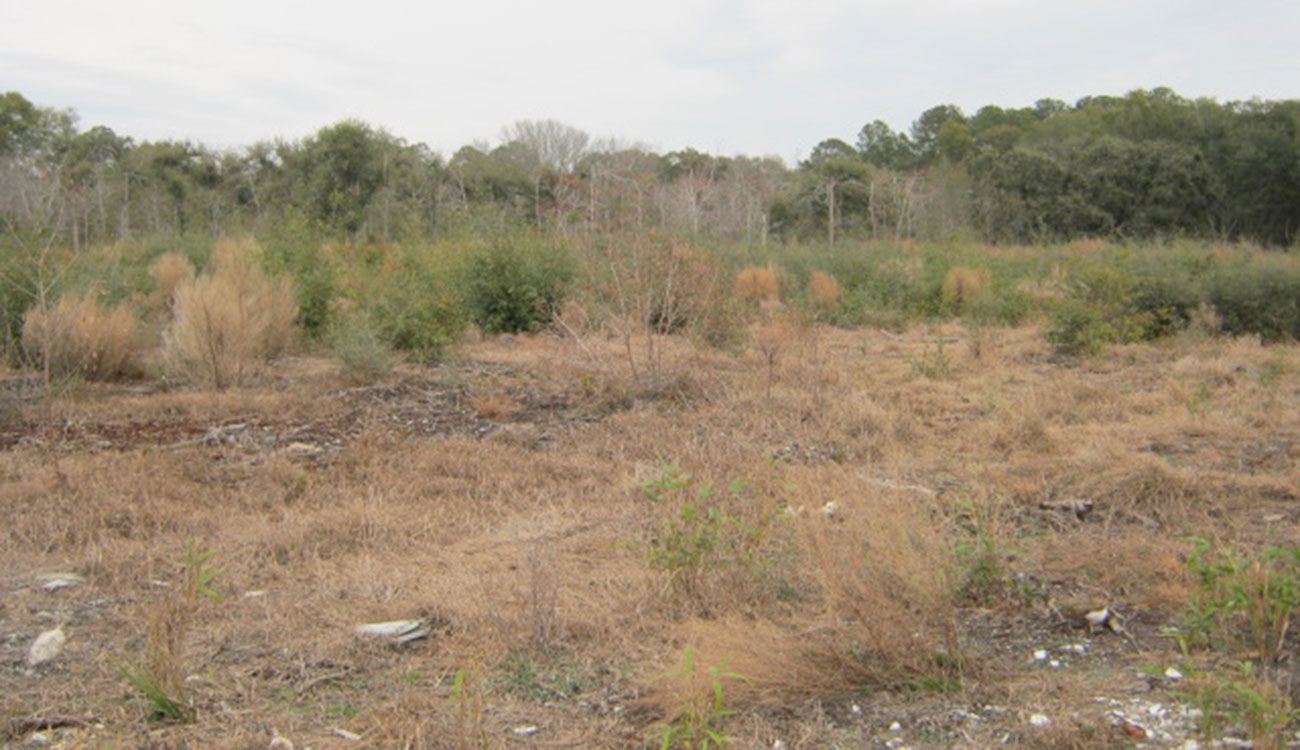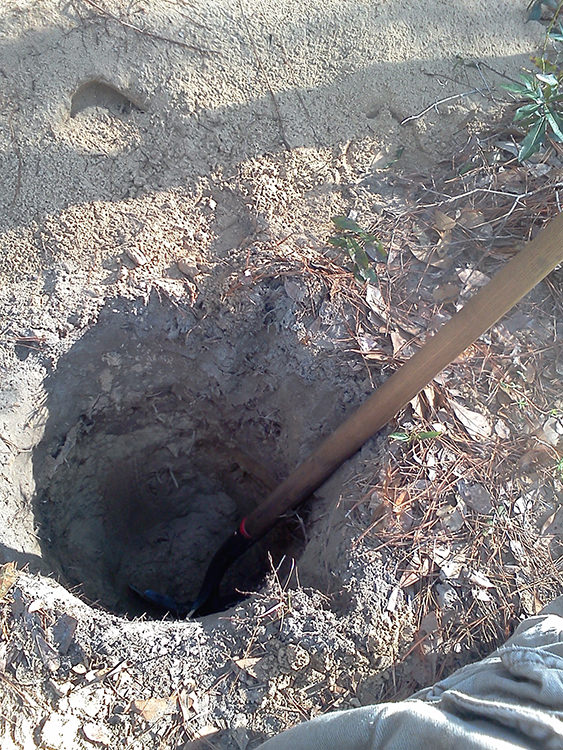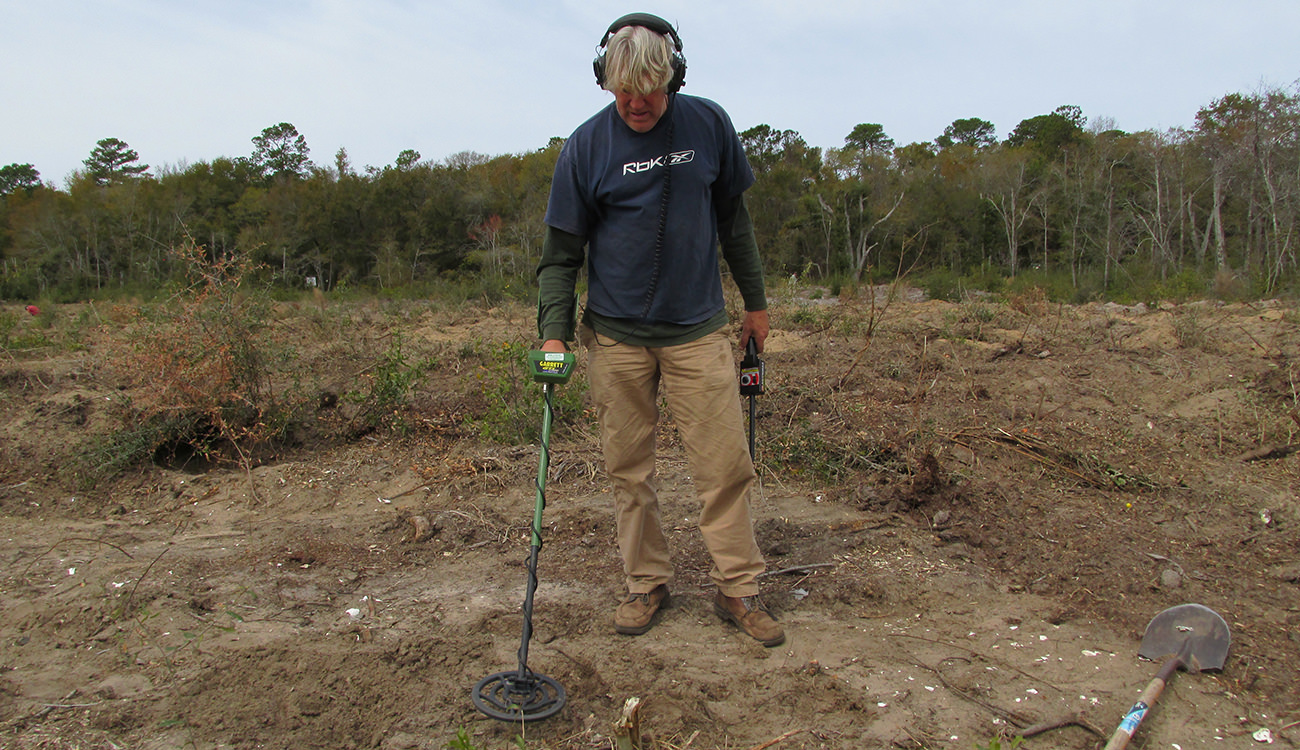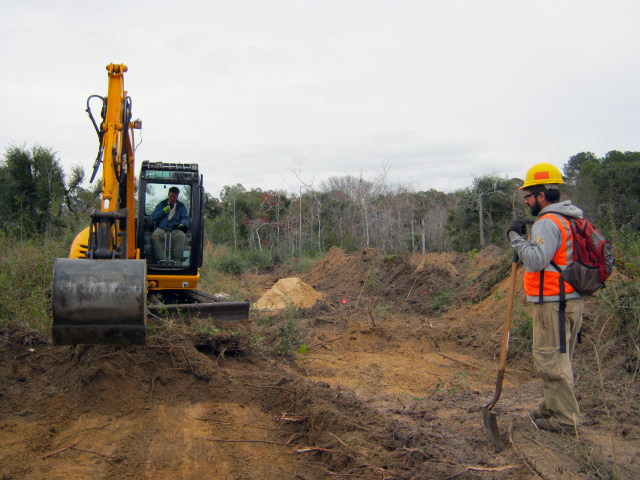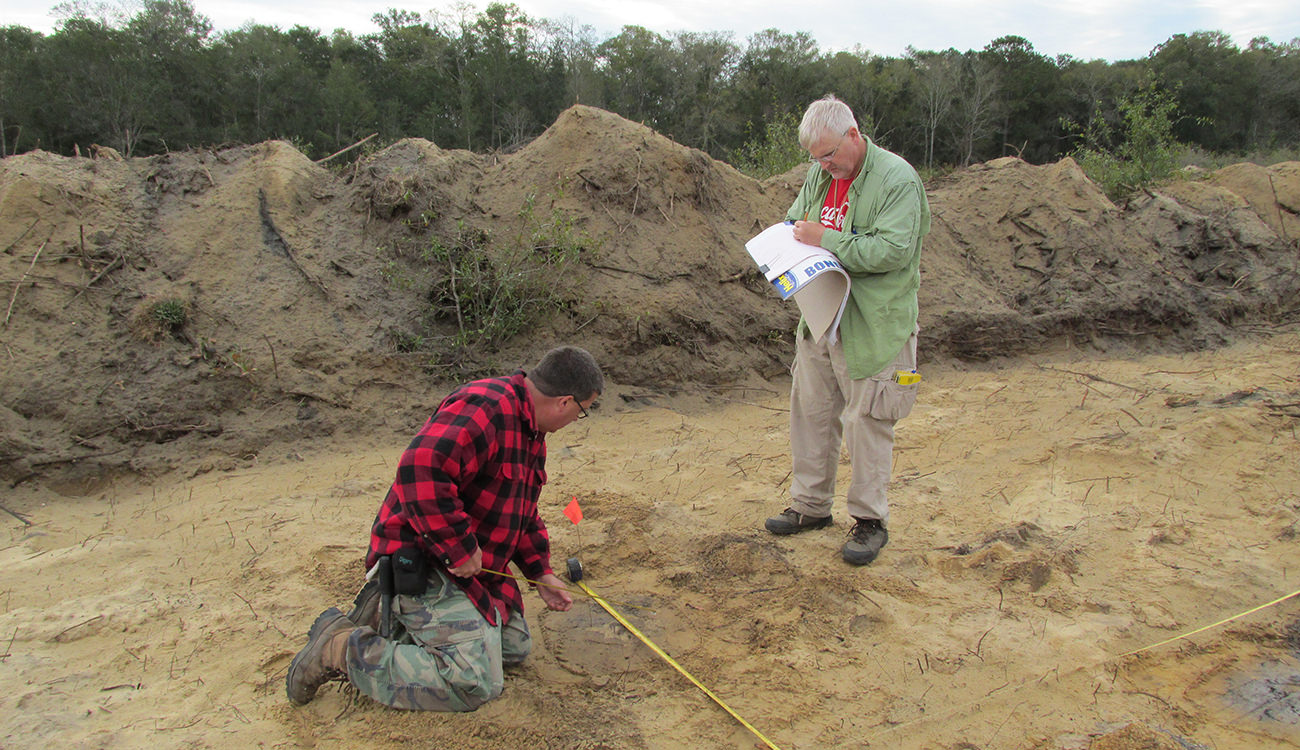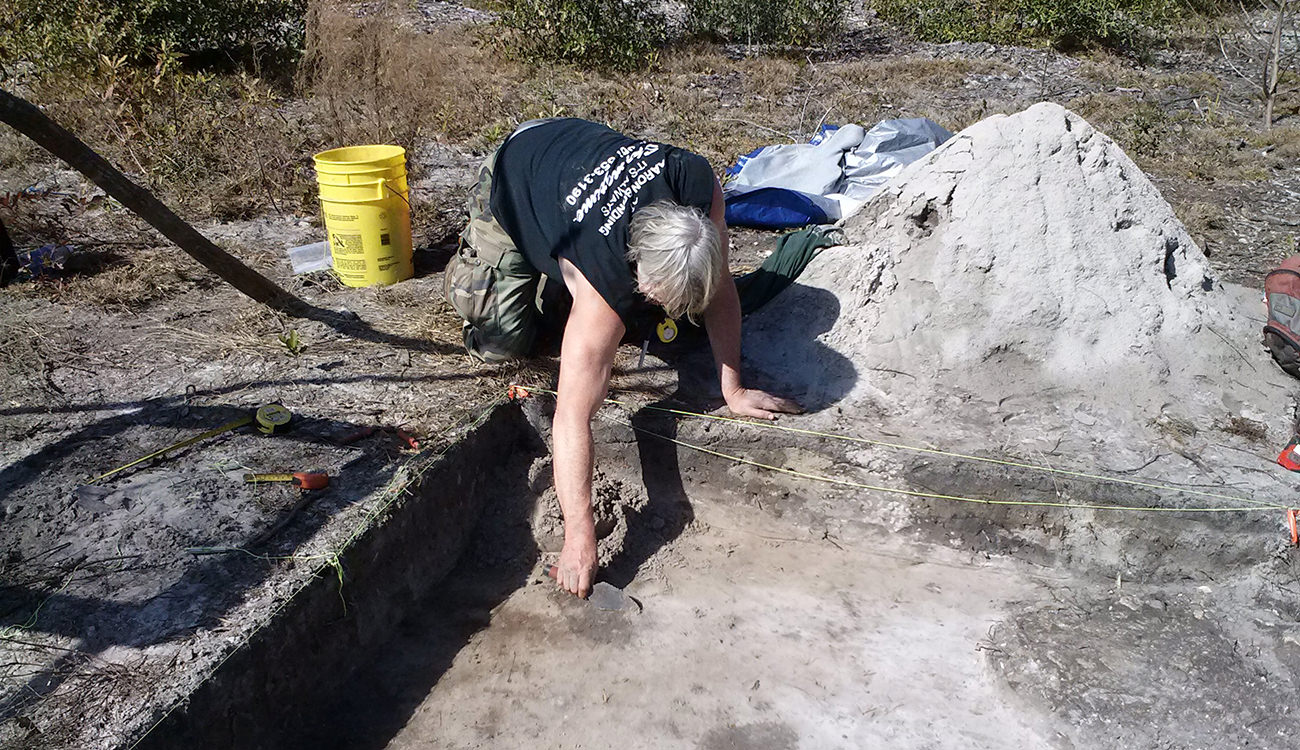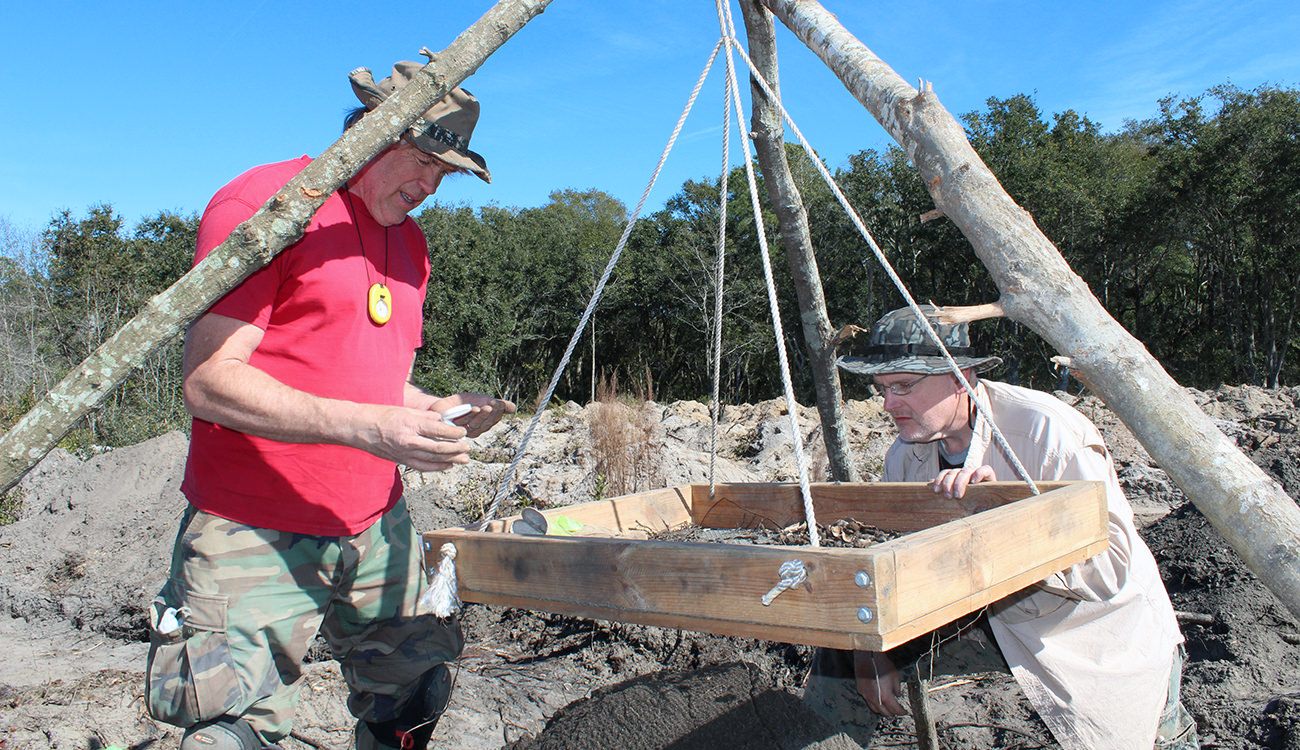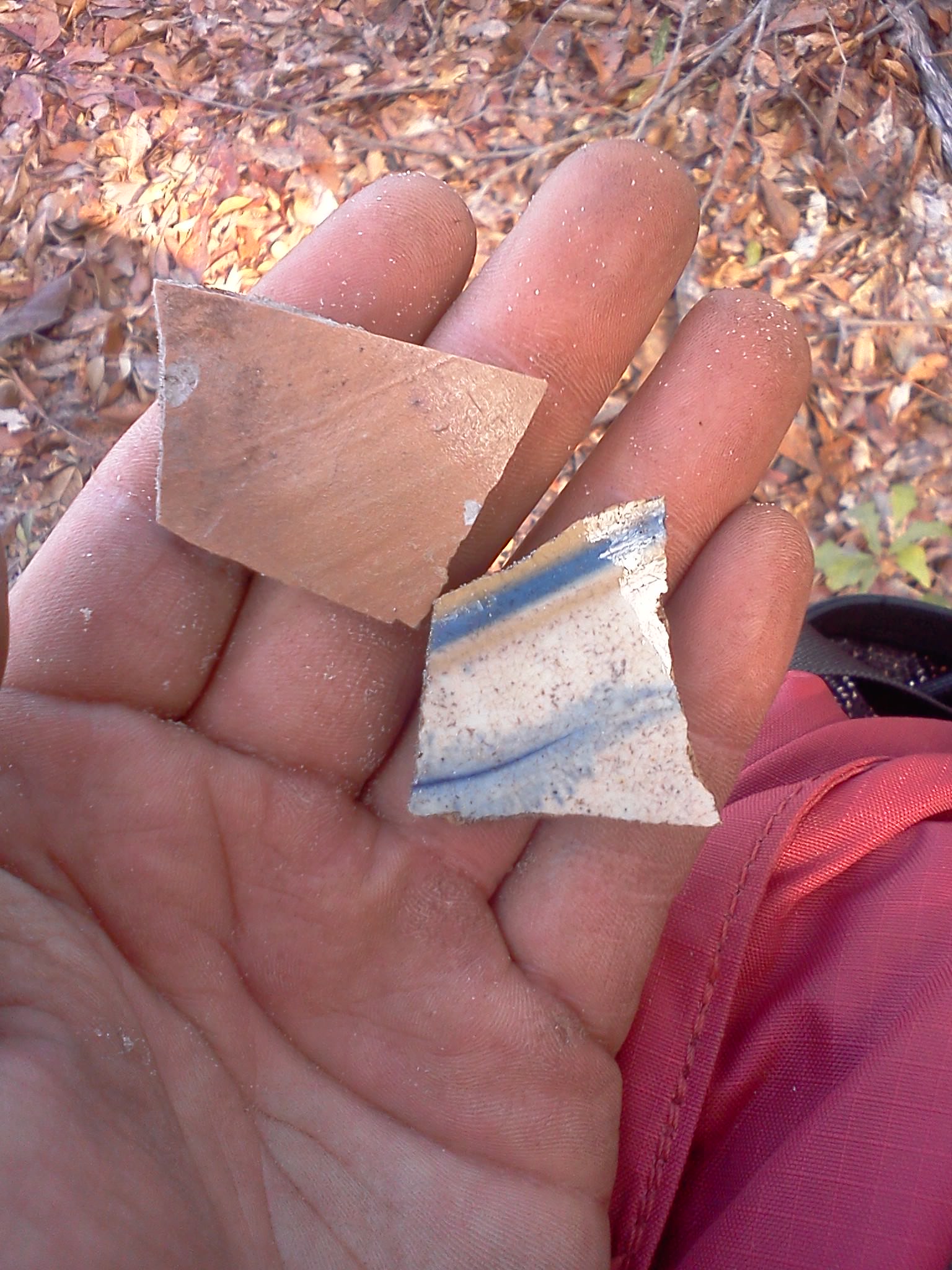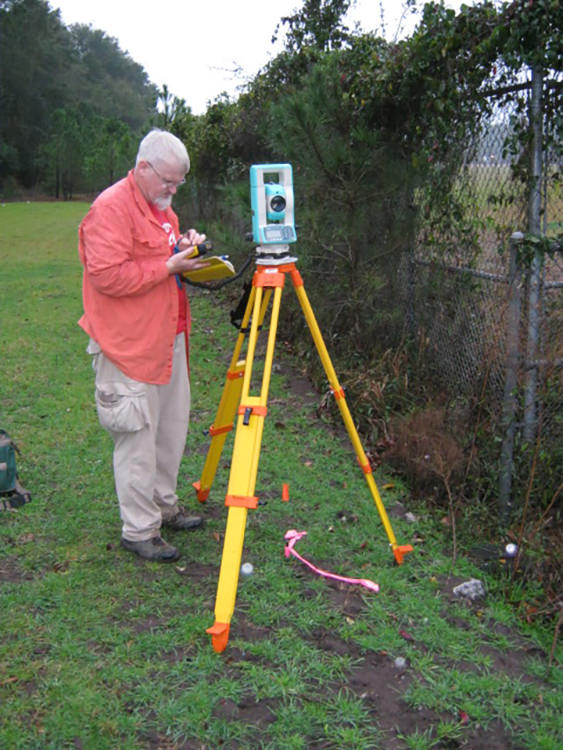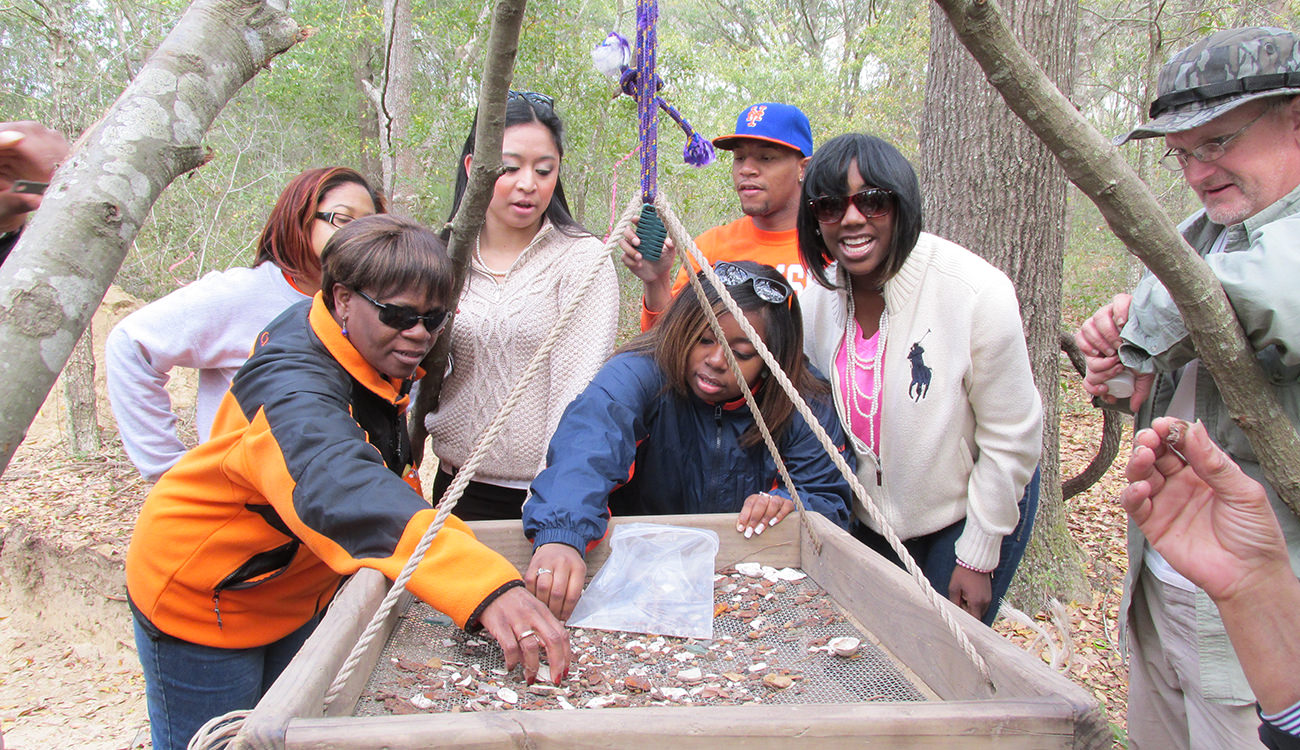The Science of Archaeology
What do Archaeologists Study?
Archaeologists are scientists who learn about the past by excavating and interpreting information buried in the ground. They study objects people lost, threw away, or left behind. Archaeology is one of the few ways we can learn about people who left no written records. In North America, 95 percent of human history happened before there was writing on this continent. Archaeologists excavate sites to unearth artifacts and features that can answer questions about when, who, where, how, and why people lived and worked at a particular place and time.
Archaeologists who study the historic past learn about people who came to or lived in North America after Europeans arrived. Historic archaeologists use information they recover through excavation along with wills, tax records, diaries, journals, maps, and a host of other archival records. Archaeologists working at Mitchelville had maps, photographs, and even names of some of the town's former residents.
What is an Archaeological Site?
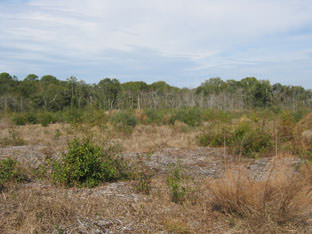
An archaeological site is any place where we find evidence of past human activities. The portion of Mitchelville adjacent to the Hilton Head Island Airport is site number 38BU2301. The 38 stands for South Carolina, the 38th state alphabetically. The BU stands for Beaufort County. This portion of Mitchelville is the 2,301st site identified in the county. The site was excavated because it would be disturbed by construction of the new Hilton Head Island Airport runway safety zone. The archaeologists hoped to find evidence of former homes, outhouses, wells, garbage dumps, and artifacts to learn about life in Mitchelville.
Excavations at Mitchelville
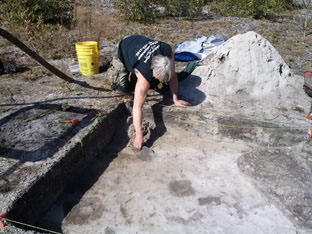
Archaeological sites are fragile, non-renewable resources. Once a site is excavated it is gone forever. Archaeologists only excavate sites when they are threatened by destruction or when they can reveal important information that cannot be found any other way. Archaeologists start by making a plan. They set out research questions they want to answer with the data they collect. Archaeologists worked at Mitchelville to recover important information that would be disturbed by the airport expansion.
During the 2012 and 2013 investigations, archaeologists began by digging small shovel test pits across the project area looking for artifacts and features. They used the data collected during the survey to select areas for further investigation. Archaeologists used a backhoe to remove the top layer of soil down to the original Mitchelville ground surface. They looked for evidence of houses, garbage pits, privies, and wells. They used metal detectors to find nails, buttons, bullets, and other metal objects.
Thanks to the shovel testing, scraping, and metal detecting, the researchers found three areas that contained evidence of Mitchelville houses. They used trowels (small hand tool with a triangular shaped head) and shovels to excavate large units by hand in each area. Once they finished the excavations, they mapped all of the soil features to understand the size, shape, and organization of the houses.
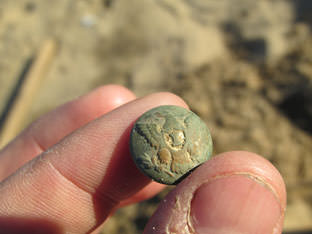
Archaeologists sieved all of the dirt through wire mesh screens to recover artifacts. The artifacts were placed in plastic bags and taken back to the archaeological laboratory where they were washed, counted, recorded, and analyzed.
Once the excavations were completed, the archaeologists studied all of the information they collected from the objects and features to understand where people lived and what kinds of activities happened at Mitchelville. Finally, they wrote a report about their findings. This report is available from South Carolina Department of Archives and History, Columbia. Here are some of the answers to their questions.
How did the population change through time?
Archaeologists did not find as many features and artifacts as they expected. This suggests that people did not live in this portion of Mitchelville for very long. It is likely the section of Mitchelville closest to the Union camp developed first, since it was close to jobs. Archaeologists believe the houses at 38BU2301 were built in late 1864 and abandoned as early as 1868, when the Union Army left Hilton Head Island.
Can we find different kinds of architectural features and what can they tell us about how the Mitchelville houses were constructed?
Researchers found approximately 38 postholes that were often shallow and not arranged in clear patterns. They found window glass, several small concentrations of nails, and a few hinges and door knobs. Archaeologists believe the residences in this portion of Mitchelville may have been dismantled and the building materials used elsewhere.
Do the artifacts show us how former slaves tried to create new lives for themselves as free people?
Many of Mitchelville's adult residents worked for the Union Army and received wages and weekly food rations. They could use their hard earned money to buy household goods, clothing, personal items, and food at stores in Mitchelville or the town of Hilton Head. Artifacts recovered from the site show people owned a variety of dishes, jewelry, clothes, cooking pots, toys, and other items typical of people of moderate means.
Are Civil War military artifacts within the Hilton Head Island Airport Improvements Project related to Mitchelville or military occupations?
Site 38BU2301 is located adjacent to Fort Howell, a large earthen fortification constructed in 1864 to protect Mitchelville. The village of Mitchelville was well established by late 1864. Due to their proximity, the residents must have fraternized with the 32nd USCI and other soldiers and sailors at the military depot. The military artifacts at 38BU2301 are probably associated with visitors to the town or used military clothing owned by residents.

